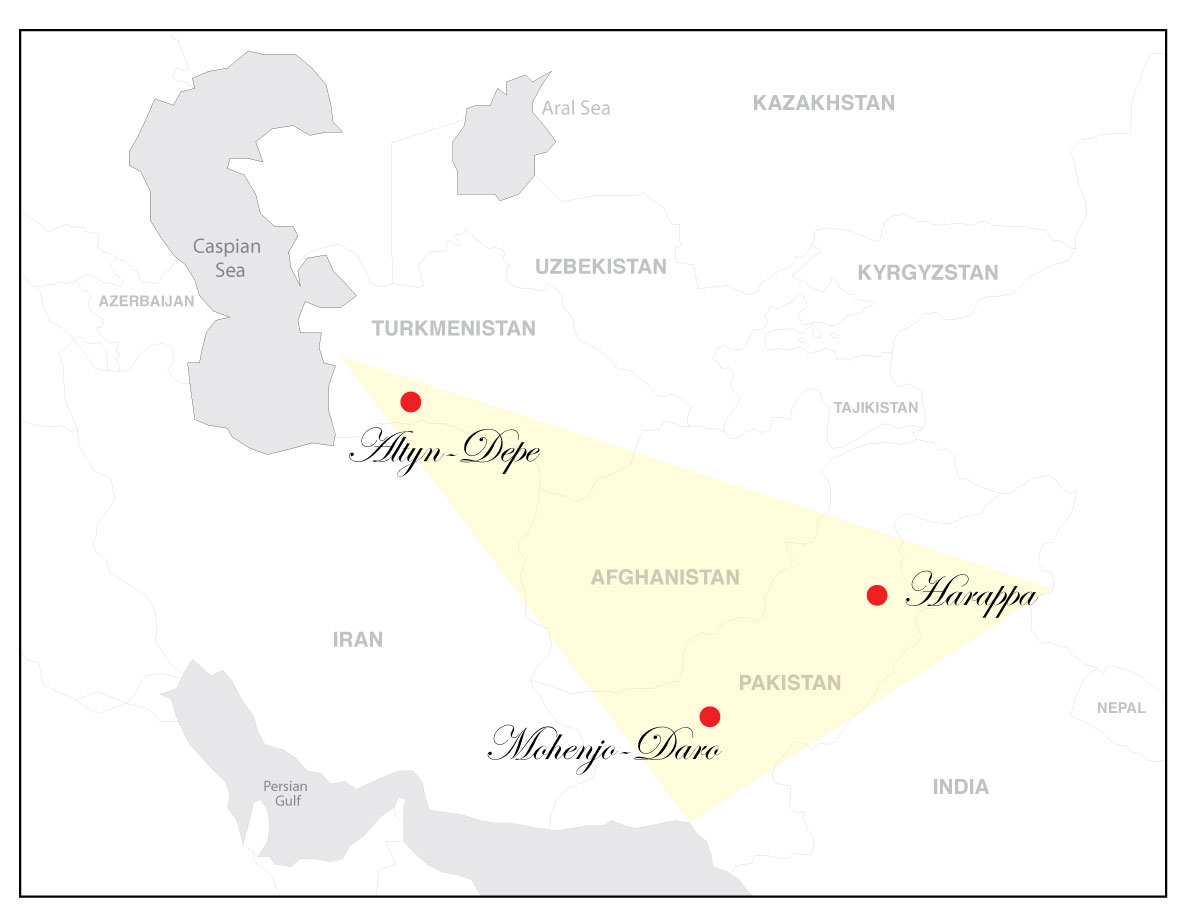|
Namazga
Namazga-Tepe or ''Namazga-depe'', is a Bronze Age ( BMAC) archaeological site in Turkmenistan, some 100 km east of Aşgabat, near the border to Iran. Excavated by Vadim Mikhailovich Masson, Viktor Sarianidi, and I. N. Khlopin from the 1950s, the site set the chronology for the Bronze Age sites in Turkmenistan (Namazga III-VI). Namazga culture was preceded in the area by Jeitun culture. Chronology It is believed that Anau culture of Turkmenistan considerably precedes the Namazga culture in the area. Namazga I period (c. 4000–3500 BC),Vidale, Massimo, (2017)Treasures from the Oxus. p. 9, Table 1. is considered contemporary with Anau IB2 period. Namazga III (c. 3200-2800) as a village settlement in Late Chalcolithic phase, and Namazga IV (c. 2800–2400 BC) as a proto-urban site, both belong to the Late Regionalization Era. Namazga V (c. 2400–2000 BC), is in the Integration Era or the period of "urban revolution" following the Anatolian model with little or no irrigation. ... [...More Info...] [...Related Items...] OR: [Wikipedia] [Google] [Baidu] |
South Turkmenistan Complex Archaeological Expedition
The South Turkmenistan Complex Archaeological Expedition (STACE), also called the South Turkmenistan Archaeological Inter-disciplinary Expedition of the Academy of Sciences of the Turkmen Soviet Socialist Republic (YuTAKE) was endorsed by the Turkmenistan Academy of Sciences. It was initially organized by the orientalist Mikhail Evgenievich Masson in 1946. The expedition had several excavations or "Brigades", based on sites and periods, and were spread over many years. The Chalcolithic settlements of southern Turkmenistan, according to Masson, date to the late 5th millennium – early 3rd millennium BC, as assessed by carbon dating and paleomagnetic studies of the findings from the excavations carried out by STACE in the Altyndepe and Tekkendepe. The foothills of the Kopetdag mountains have revealed the earliest village cultures of Central Asia in the areas of Namazga-Tepe (more than 50 ha) and Altyndepe (26 ha), Ulug Depe (20 ha), Kara Depe (15 ha), and Geok-Syur (12 ha). I ... [...More Info...] [...Related Items...] OR: [Wikipedia] [Google] [Baidu] |
Bronze Age
The Bronze Age is a historic period, lasting approximately from 3300 BC to 1200 BC, characterized by the use of bronze, the presence of writing in some areas, and other early features of urban civilization. The Bronze Age is the second principal period of the three-age system proposed in 1836 by Christian Jürgensen Thomsen for classifying and studying ancient societies and history. An ancient civilization is deemed to be part of the Bronze Age because it either produced bronze by smelting its own copper and alloying it with tin, arsenic, or other metals, or traded other items for bronze from production areas elsewhere. Bronze is harder and more durable than the other metals available at the time, allowing Bronze Age civilizations to gain a technological advantage. While terrestrial iron is naturally abundant, the higher temperature required for smelting, , in addition to the greater difficulty of working with the metal, placed it out of reach of common use until the end o ... [...More Info...] [...Related Items...] OR: [Wikipedia] [Google] [Baidu] |
Altyndepe
(, sometimes Altyn Tepe, Turkmen "Golden Hill"), is a Bronze Age ( BMAC) archaeological site in Turkmenistan, near Aşgabat, inhabited first from c. 3200 to 2400 BCE in the Late Regionalization Era, and from c. 2400 to 2000 BCE in the Integration Era as a full urban site. Excavations Large-scale excavations at Altyn-depe started in 1965. During the late chalcolithic period Altyn Depe became a large-scale center with an area of 25 hectares. It was surrounded by an adobe wall with rectangular watch towers. Several living quarters were uncovered. The area called ''Excavation 9'' was a living quarter with several houses, many of them perhaps belonging to wealthy people. The houses had courtyards and street were running between them. People were often buried within houses. At ''Excavation 5'' and ''Excavation 10'' two other larger parts of living quarters were found. Those belong more likely to craftsmen. The houses are smaller and not so well built. Ziggurat The site is notable ... [...More Info...] [...Related Items...] OR: [Wikipedia] [Google] [Baidu] |
Alekseyevka Culture
The Andronovo culture (russian: Андроновская культура, translit=Andronovskaya kul'tura) is a collection of similar local Late Bronze Age cultures that flourished 2000–1450 BC,Grigoriev, Stanislav, (2021)"Andronovo Problem: Studies of Cultural Genesis in the Eurasian Bronze Age" in Open Archaeology 2021 (7), p.3: "...By Andronovo cultures we may understand only Fyodorovka and Alakul cultures..."Parpola, Asko, (2020)"Royal 'Chariot' Burials of Sanauli near Delhi and Archaeological Correlates of Prehistoric Indo-Iranian Languages" in Studia Orientalia Electronica, Vol. 8, No. 1, Oct 23, 2020, p.188: "...the Alakul’ culture (c.2000–1700 BCE) in the west and the Fëdorovo culture (c.1850–1450 BCE) in the east..." in western Siberia and the central Eurasian Steppe. Some researchers have preferred to term it an archaeological complex or archaeological horizon. The slightly older Sintashta culture (2050–1900 BC), formerly included within the Androno ... [...More Info...] [...Related Items...] OR: [Wikipedia] [Google] [Baidu] |
Archaeological Sites In Turkmenistan
Archaeology or archeology is the scientific study of human activity through the recovery and analysis of material culture. The archaeological record consists of Artifact (archaeology), artifacts, architecture, biofact (archaeology), biofacts or ecofacts, archaeological site, sites, and cultural landscapes. Archaeology can be considered both a social science and a branch of the humanities. It is usually considered an independent academic discipline, but may also be classified as part of anthropology (in North America – the four-field approach), history or geography. Archaeologists study human prehistory and history, from the development of the first stone tools at Lomekwi in East Africa 3.3 million years ago up until recent decades. Archaeology is distinct from palaeontology, which is the study of fossil remains. Archaeology is particularly important for learning about prehistoric societies, for which, by definition, there are no written records. Prehistory includes ove ... [...More Info...] [...Related Items...] OR: [Wikipedia] [Google] [Baidu] |




.jpg)